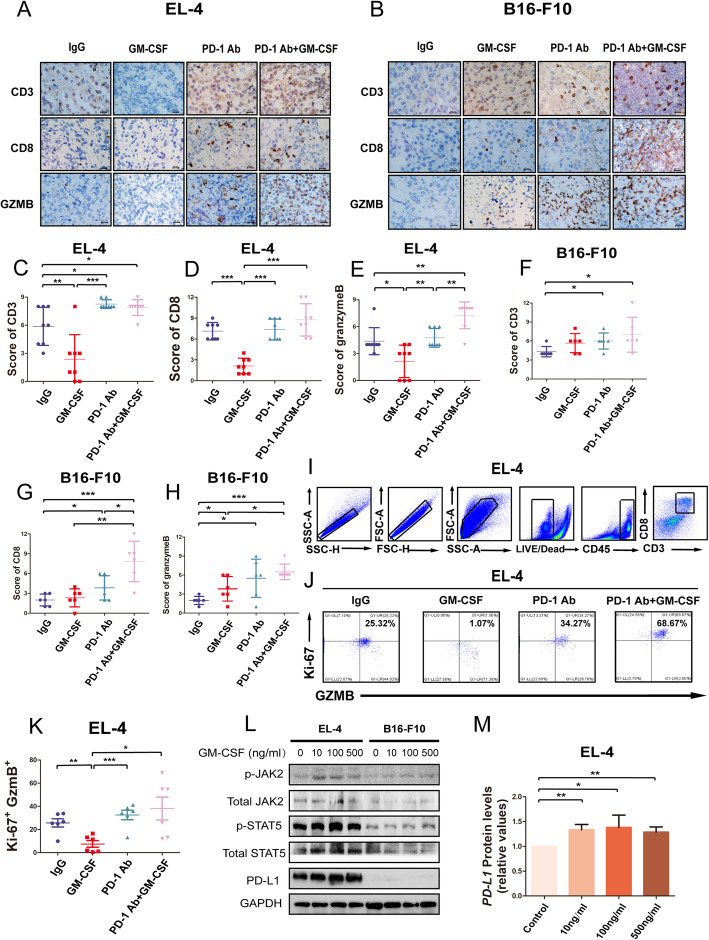Fig. 2.
GM-CSF promotes immunosuppression in vivo. a The representative immunohistochemical staining of CD3, CD8, and granzyme B in EL4 tumor tissues of C57BL/6 mice was shown. b The representative immunohistochemical staining of CD3, CD8, and granzyme B in B16-F10 tumor tissues of C57BL/6 mice were shown. C Immunohistochemistry staining of CD3 in tumor tissues of C57BL/6 mouse-bearing EL4 tumors with different treatments (n = 8). d Immunohistochemistry staining of CD8 in tumor tissues of C57BL/6 mouse-bearing EL4 tumors with different treatments (n = 8). e Immunohistochemistry staining of granzyme B in xenograft tumor tissues of C57BL/6 mouse-bearing EL4 tumors with different treatments (n = 8). f Immunohistochemistry staining of CD3 in tumor tissues of C57BL/6 mice bearing B16-F10 tumors with different treatments (n = 6). g Immunohistochemistry staining of CD8 in tumor tissues of C57BL/6 mice bearing B16-F10 tumors with different treatments (n = 6). h Immunohistochemistry staining of granzyme B in xenograft tumor tissues of C57BL/6 mice bearing B16-F10 tumors with different treatments (n = 8). The staining scores were presented as means ± S. D in the scatter plot. * P < 0.05, ** P < 0.01, *** P < 0.001. i Representative contour plots showing the general gating strategy used to identify the purified CD8 T cells (CD45 + CD3 + CD8+) from EL-4 tumors of C57BL/6 with different treatment (n = 6). j The percentage of Ki-67 + GzmB+ CD8 T cells of EL-4 tumors of C57BL/6 mouse with different treatment (n = 6). k Scatter plots that represent the percentage of Ki-67 + GzmB+ CD8 T cells of EL-4 tumors of C57BL/6 mouse with different treatment (n = 6). l EL-4 and B16-F10 cells were treated with GM-CSF (10 ng/ml, 100 ng/ml, and 500 ng/ml) for 12 h, p-JAK2, JAK2, p-STAT5, STAT5, and PD-L1 protein expression was measured by Western blot. m Relative protein expression levels of PD-L1 were increased by GM-CSF (10 ng/ml, 100 ng/ml, and 500 ng/ml) treatment in EL-4 and B16-F10 cells

